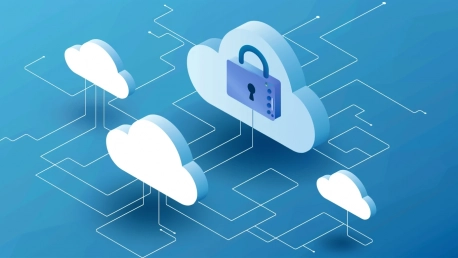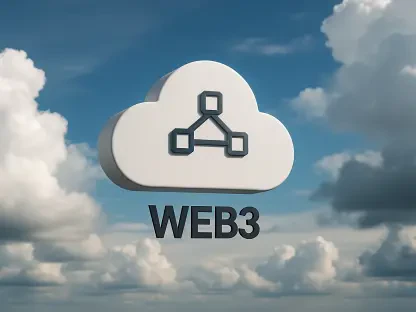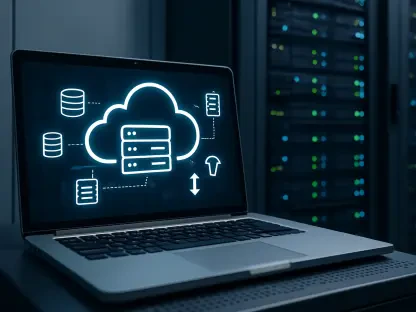As businesses continue their digital transformation journeys, cloud computing has become an integral part of modern operations. Transitioning to cloud environments offers numerous advantages, including scalability, flexibility, and cost efficiency. However, this shift also introduces new security challenges that organizations must address to protect their cloud workloads effectively. The recent study by Kaspersky and ISG indicates a growing trend in adopting cloud-native technologies such as Kubernetes and Docker, making cloud workload security a paramount concern for businesses.
Data Breaches and Encryption Practices
Implementing Robust Encryption Methods
One of the foremost concerns in cloud security is safeguarding data from breaches and leakage. Adopting robust encryption practices for data both at rest and in transit is crucial. Encryption ensures that, even if cybercriminals intercept or unlawfully access data, they cannot read it without the proper decryption keys. Companies should utilize strong encryption protocols and regularly update them to combat evolving threats. The sophistication of modern encryption methods can act as a formidable barrier against unauthorized access, providing a critical layer of defense in the cloud security arsenal.As organizations increasingly rely on cloud-based solutions, the risk of data breaches continues to evolve, highlighting the necessity for ongoing vigilance. Regular updates to encryption protocols, along with the implementation of multi-factor authentication, help fortify data security. Moreover, integrating encryption as a default measure during data storage and transmission adds an indispensable shield against potential security breaches. By maintaining stringent encryption standards and staying adaptive to new technologies, businesses can effectively safeguard their sensitive information in the cloud environment, ensuring the integrity and confidentiality of their data assets.
Strict Access Controls and Activity Monitoring
In addition to encryption, employing strict access controls can significantly mitigate the risk of data breaches. By establishing clear access guidelines and continuously monitoring user activities, businesses can detect and preempt unauthorized access attempts. Leveraging advanced monitoring tools can help identify anomalies in user behavior, providing an extra layer of security against breaches. It is critical for organizations to define precise roles and permissions, allowing only authorized personnel to access sensitive data and systems, thus reducing potential vulnerabilities.Regular audits and reviews of access controls are essential for maintaining robust security postures. Continuous monitoring and analysis of user activities can unveil suspicious patterns early, preventing potential breaches. User behavior analytics (UBA) tools can further enhance security by identifying irregular activities and flagging them for immediate action. Additionally, enforcing strict access control policies and regularly educating employees on the significance of these measures ensure a proactive approach to cloud security, fostering a secure and controlled environment.
Managing Cloud Configurations
Addressing Misconfigurations with CSPM Tools
Another substantial threat to cloud workloads stems from misconfigurations and poorly managed access controls. Automated tools like Cloud Security Posture Management (CSPM) are essential to detect and correct these misconfigurations quickly. By continuously scanning cloud environments for vulnerabilities, CSPM tools ensure that configurations adhere to best practices and compliance standards. These tools provide real-time insights into the security posture of the cloud, enabling organizations to promptly address any deviations or vulnerabilities.Furthermore, CSPM tools offer automated remediation features that facilitate quicker response times to security incidents. This automation not only enhances security but also alleviates the burden on IT teams by streamlining the management of cloud configurations. Embracing CSPM solutions, businesses can achieve a proactive stance in protecting their cloud environments, ensuring that security policies are consistently applied and compliance requirements are met effectively. This approach is indispensable in a landscape where the complexity and scale of cloud operations continually expand.
Regular Security Audits and Principle of Least Privilege
Regular security audits are necessary to identify and rectify misconfigurations before they can be exploited. Additionally, adhering to the principle of least privilege, where users are granted minimal access necessary for their roles, reduces the risk of unauthorized access and vulnerabilities emerging from misconfigured setups. Conducting frequent audits helps maintain a secure environment by ensuring that security measures remain effective and up to date. Regular reviews of user permissions further support the objective of minimizing risk exposure.Implementing a robust audit schedule and maintaining detailed records of audit findings and corrective actions is pivotal for continuous improvement. Automation tools can assist by scheduling and executing these audits, providing consistent and accurate assessments of the cloud security posture. By combining regular security evaluations with the principle of least privilege, businesses can enhance their control over cloud resources, ensuring that access is appropriately restricted and potential threats are mitigated effectively.
Mitigating Insider Threats
Monitoring and Logging Systems
Insider threats pose unique challenges that require robust solutions. Implementing comprehensive monitoring and logging systems enables organizations to track user activities and identify unusual behavior patterns that may indicate potential threats. These systems can provide insights into user actions and help identify malicious or negligent insiders before they cause harm. By logging all user interactions with critical systems, organizations can create a detailed audit trail that is invaluable for forensic analysis and breach investigations.Enhanced monitoring systems can leverage machine learning algorithms to detect deviations from typical user behavior, raising alerts for further investigation. This proactive approach ensures that potential insider threats are identified quickly and addressed before causing significant damage. Moreover, integrating these monitoring solutions with incident response plans enhances the organization’s ability to contain and mitigate threats efficiently, strengthening overall cloud security resilience.
Comprehensive User Training and Policy Enforcement
Educating employees about security best practices and the implications of insider threats is equally important. Regular user training programs raise awareness and reinforce the significance of following security policies. By keeping these policies updated and ensuring they are strictly enforced, organizations can mitigate risks from insider threats. Training sessions should cover the latest threat vectors, emphasizing the importance of vigilance and adherence to security protocols in mitigating insider risks.Furthermore, cultivating a security-conscious culture within the organization is crucial. Employees should feel responsible for the security of the company and understand the potential consequences of their actions. Ongoing education and regular updates to security policies enable organizations to stay ahead of emerging threats. By fostering an environment where security awareness is prioritized, businesses can significantly reduce the likelihood of insider threats compromising their cloud workloads.
Ensuring API Security
Adopting Secure Coding Practices
The security of Application Programming Interfaces (APIs) is another critical aspect of protecting cloud workloads. Adopting secure coding practices from the development stage helps mitigate vulnerabilities in APIs. Rigorous testing of APIs is necessary to identify and fix security flaws before they can be exploited by malicious actors. Secure coding guidelines should be integrated into the development lifecycle, ensuring that security is a fundamental component of software design and implementation.Continuous integration and continuous deployment (CI/CD) pipelines that include security testing can further enhance API security. By automating vulnerability assessments and integrating security checks into the development process, companies can quickly identify and rectify potential issues. Encouraging developers to follow secure coding standards and conduct regular code reviews ensures that security remains a top priority throughout the software development lifecycle, reducing the risk of exposing APIs to attacks.
Strong Authentication and Authorization Mechanisms
Apart from secure coding, implementing strong authentication and authorization mechanisms is essential to prevent unauthorized access to APIs and interfaces. Utilizing API gateways to monitor and control API traffic provides an additional security layer, ensuring that only legitimate traffic interacts with cloud resources. Strong authentication methods, such as OAuth and single sign-on (SSO), enhance security by ensuring that users are who they claim to be.Authorization mechanisms should be fine-tuned to ensure that users can only access the resources they are permitted to. Continuous monitoring of API activities and enforcing rate limiting can prevent abuse and detect potential security incidents early. Implementing these measures helps maintain the integrity and confidentiality of cloud resources, safeguarding them from unauthorized access and potential misuse.
Compliance with Regulatory Requirements
Continuous Monitoring and Assessment
Meeting regulatory requirements is a top concern for many organizations. Achieving and maintaining compliance necessitates continuous monitoring and assessment. Utilizing cloud compliance management tools can help track compliance across various regulatory frameworks, ensuring that organizations stay aligned with industry standards and avoid penalties. These tools offer automated compliance checks, making it easier to manage and demonstrate adherence to regulatory requirements.Compliance management solutions provide real-time insights into the organization’s compliance status, highlighting areas needing attention. By integrating these tools within their cloud environments, companies can simplify compliance efforts and reduce the risk of non-compliance. Keeping abreast of changing regulatory landscapes and adapting policies accordingly ensures that organizations remain compliant, protecting them from legal repercussions and maintaining their reputation.
Updating Organizational Policies and Thorough Documentation
Keeping organizational policies and procedures updated to reflect current regulations is vital. Maintaining thorough documentation of compliance efforts not only helps in audits but also demonstrates the organization’s commitment to security and regulatory adherence. Clear and concise documentation simplifies the audit process and provides a reference for compliance activities. Organizations should establish a regular review cycle for policies, ensuring they remain relevant and effective in addressing regulatory requirements.Thorough documentation also aids in identifying gaps and areas for improvement, facilitating continuous enhancement of compliance strategies. By maintaining comprehensive records and consistently updating protocols, businesses can navigate the complexities of regulatory compliance more effectively. Demonstrating a proactive approach to compliance helps build trust with stakeholders and regulatory bodies, reinforcing the organization’s dedication to adhering to industry standards.
Defending Against Advanced Persistent Threats
Multi-layered Security Approach
Advanced Persistent Threats (APTs) require a sophisticated defense strategy. Deploying advanced threat detection and response solutions that leverage machine learning and artificial intelligence enhances the ability to identify and mitigate these complex attacks. A multi-layered security approach, combining various security measures, strengthens the overall defense posture. This strategy includes endpoint protection, network security, and threat intelligence services working in unison to provide comprehensive protection.By integrating multiple layers of defense, organizations can create a robust barrier against APTs, ensuring that even if one layer is breached, others can contain and neutralize the threat. Regular penetration testing and red teaming exercises further bolster defenses by identifying potential weaknesses and providing actionable insights for remediation. Emphasizing continuous improvement and adaptation in security practices ensures that defenses remain effective against evolving threats.
Regular System Updates and Threat Hunting
Regularly updating and patching systems are fundamental practices to protect against known vulnerabilities. Conducting threat hunting exercises allows organizations to proactively search for hidden threats within their environments, enabling early detection and mitigation of potential APTs. Regular system updates ensure that the latest security patches are applied, minimizing the risk of exploitation by cybercriminals.Threat hunting teams utilize advanced analytics and intelligence to identify and neutralize threats that traditional security solutions might miss. This proactive approach enhances the organization’s ability to detect subtle indicators of compromise, providing an opportunity to address threats before they escalate. By maintaining an aggressive stance towards threat hunting and system maintenance, businesses can stay ahead of adversaries and safeguard their cloud workloads more effectively.
Embracing the Shared Responsibility Model
Clear Delineation of Responsibilities
Understanding the shared responsibility model, which delineates security responsibilities between organizations and their cloud service providers, is crucial. Clear communication and collaboration with cloud providers ensure that comprehensive security measures are implemented, preventing gaps in protection. Organizations must recognize their responsibilities and work closely with providers to address all aspects of cloud security, from infrastructure to data protection.Defining clear roles and responsibilities helps avoid misunderstandings and ensures that all security obligations are met. Regularly reviewing and updating shared responsibility agreements ensures that both parties remain aligned with evolving security requirements and best practices. This collaborative approach maximizes the security benefits of cloud services, fostering a secure and resilient cloud environment.
Continuous Threat Intelligence and Education
As businesses continue their digital transformation journeys, the adoption of cloud computing has become a cornerstone of modern operations. This transition to cloud environments offers a plethora of benefits, including improved scalability, enhanced flexibility, and significant cost savings. Nonetheless, this shift also introduces a range of new security challenges that organizations must address to safeguard their cloud workloads effectively. According to a recent study conducted by Kaspersky and ISG, there’s an increasing trend in the adoption of cloud-native technologies like Kubernetes and Docker. These platforms bring considerable advantages but also make cloud workload security a crucial issue for businesses. Companies leveraging these technologies must be vigilant and proactive in implementing robust security measures to protect against potential threats. As cloud-native applications continue to grow in popularity, ensuring their secure operation becomes a critical priority for organizations seeking to harness the full potential of the cloud while guarding against cyber risks.









